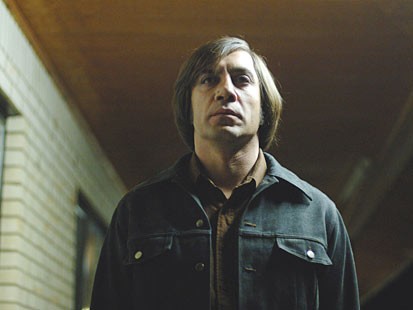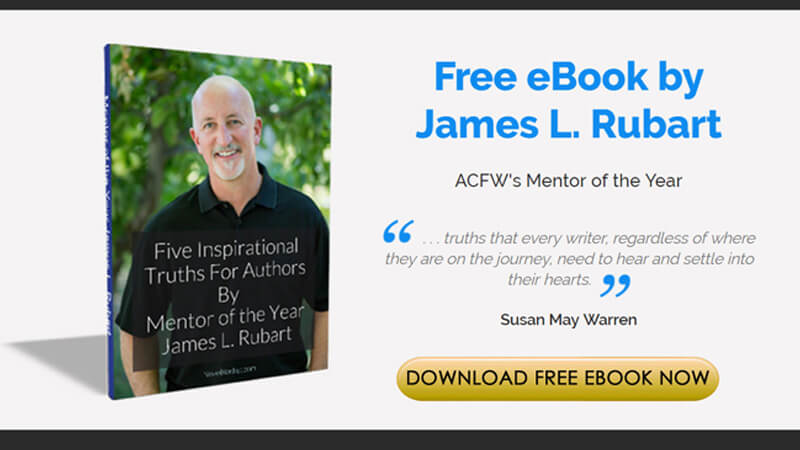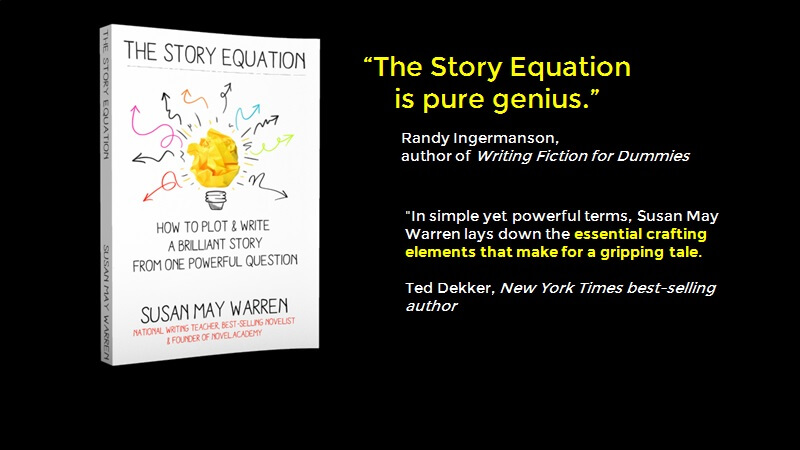By Mike Duran
Mike’s stories have appeared in Relief Journal, Coach’s Midnight Diner, Forgotten Worlds, Alienskin, Infuze Magazine and Dragons, Knights and Angels, with articles in The Matthew’s House Project, Relevant Magazine and 316 Journal. Mike is currently part of the editorial team for the Midnight Diner’s second edition and contributes monthly commentary at Novel Journey. He and his wife Lisa live in Southern California, where they have raised four children. You can visit him at mikeduran.com.
T.S. Eliot, The Waste Land
This year’s Academy Awards ceremony was one of the least watched in recent years. Variety reported that Oscar
 ratings fell to an all-time low, with an alarming 20% falloff. While some speculated it had to do with the writer’s strike, most believed it was the Best Picture nominees, a decidedly dark bunch. Of the five films, only Juno carried much levity (and even then, it involved a pregnant teen contemplating abortion and the dysfunctional adults in her life). The rest, including Best Picture winner No Country for Old Men, were not nearly as optimistic about the state of humankind. Whether it was a robotic serial killer, a ruthless oilman, a corrupt attorney, or an adolescent liar, Hollywood rendered a cinematic unfurling of human depravity at its best. Where is Frank Capra when you need him?
ratings fell to an all-time low, with an alarming 20% falloff. While some speculated it had to do with the writer’s strike, most believed it was the Best Picture nominees, a decidedly dark bunch. Of the five films, only Juno carried much levity (and even then, it involved a pregnant teen contemplating abortion and the dysfunctional adults in her life). The rest, including Best Picture winner No Country for Old Men, were not nearly as optimistic about the state of humankind. Whether it was a robotic serial killer, a ruthless oilman, a corrupt attorney, or an adolescent liar, Hollywood rendered a cinematic unfurling of human depravity at its best. Where is Frank Capra when you need him?Really, it’s not that surprising. Bleak is becoming fashionable these days. The last several decades have witnessed more music, films and books with an unapologetically grim streak. Cormac McCarthy's The Road, for instance, is about a father and son trekking across a post-apocalyptic wasteland, fleeing marauding gangs and resisting
 the urge to cannibalize. The exceedingly cheerless book only won the Pulitzer Prize. Children of Men, one of the most critically acclaimed films of 2006, portrayed a world of infertility, withering under the weight of its physical and existential barrenness. And somewhere along the way, Batman became The Dark Knight and the Joker went from Jack Nicholson's clownish caricature to the late Heath Ledger's sinister psychopath.
the urge to cannibalize. The exceedingly cheerless book only won the Pulitzer Prize. Children of Men, one of the most critically acclaimed films of 2006, portrayed a world of infertility, withering under the weight of its physical and existential barrenness. And somewhere along the way, Batman became The Dark Knight and the Joker went from Jack Nicholson's clownish caricature to the late Heath Ledger's sinister psychopath.Even a cursory survey of pop culture reveals a bent toward bleak, a trendy morbidity that infuses our worldview and lifestyle. Gothic culture revels in black and our philosophers accommodate by fashioning nihilistic wardrobes stitched with the thread of despair. Perhaps Thom Yorke, lead singer for the band Radiohead, sums up the Zeitgeist of our generation best when, in the song Bodysnatchers, he intones,
Has the light gone out for you?
Because the light's gone for me
It is the 21st century
Maybe more than any other, the 21st century is about the light going out.
This trend towards bleak creates an interesting dilemma for the Christian artist and author. On the one hand, Christian art has come to mean anything but bleak. Allen Arnold, Senior Vice President of Thomas Nelson Fiction, in a interview on Novel Journey this weekend, was asked to define Christian Fiction. He said,
By and large, Christian Fiction has its own man-made, restrictive rules for content and character development. Much of it forces a "precious moments” or G-rated worldview that isn't comfortable with the mystery of God…or with many other things.
Sadly, this “‘precious moments’ or G-rated worldview” is fairly prevalent in the subculture of Christian art. Like a twisted rendition of Groundhog's Day, we reincarnate happy endings ad nauseam, unable to break the cycle, no matter how disconnected from reality they are.
Nevertheless, even the most buoyant believer must admit that the world is a bleak place. The nightly news is full of stories about terrorist bombings, celebrity overdoses, global warming, corporate corruption, political scandal, senseless crime, genocide, infanticide and suicide. Real life, as opposed to the Precious Moments version of life, does not always have a happy ending.
Furthermore, the Bible pulls no punches about the corrosive state of human depravity and the dismal future of our own making. The apostle Paul wrote:
But mark this: There will be terrible times in the last days. People will be lovers of themselves, lovers of money, boastful, proud, abusive, disobedient to their parents, ungrateful, unholy, without love, unforgiving, slanderous, without self-control, brutal, not lovers of the good, treacherous, rash, conceited, lovers of pleasure rather than lovers of God… (II Timothy 3:1-4 NIV).
Terrible times. Brutal people. Geez, what a gloom merchant!

But Paul’s not the only negativist. Jesus used similar language in describing the end of the age when He said,
“…there will be great distress, unequaled from the beginning of the world until now—and never to be equaled again. If those days had not been cut short, no one would survive…” (Matthew 24: 21-22).
Sure the Bible ends with a celestial city wherein the saints go marching in. But along the way, it describes a society in collapse barreling toward a realm of hideous torment, a spiritual sanitarium where human souls exist in perpetual agony. Hell is as much a part of the Scriptural record as is Heaven, and without it the Story is incomplete.
And who better to write about Hell than those who know the whole Story?
But while Rome burns, many of us are busy fiddling about Shangri-la, sanitizing our stories with the utmost care, bleaching them of the bleakness that is so intrinsic to human experience, drifting further and further out of touch with a world grappling with its own moral and spiritual disintegration.
Contrary to the self-help gurus, Jesus was not a "positive thinker," a first-century Zig Ziglar with a briefcase full of feel-good witticisms. In fact, many of Jesus’ tales did not have a happy ending. The parable of the Rich Man and Lazarus (Luke 16:19-31) is one such story. The poor man has his sores licked by dogs and yearns to eat the crumbs from the rich man’s table. He dies and is carried to Abraham’s side. But the rich man is hardly so lucky. He dies and dwells in a place of torment, longing for just a droplet of cool water. When that is withheld, the rich man begs
 Abraham to send Lazarus to warn his brethren of this place of inexhaustible anguish. Jesus ends the story with Abraham’s grim assessment, “If they do not listen to Moses and the Prophets, they will not be convinced even if someone rises from the dead” (vs. 31).
Abraham to send Lazarus to warn his brethren of this place of inexhaustible anguish. Jesus ends the story with Abraham’s grim assessment, “If they do not listen to Moses and the Prophets, they will not be convinced even if someone rises from the dead” (vs. 31).That’s it? No redemptive summary? No Precious Moments denouement? Alas, the curtain closes on a man in perpetual agony, with brothers probably on the way to meet him.
It appears Jesus purposely did not lighten the tone of this story. He forgoes the G-rating in hopes of scaring the hell out of His listeners. Whatever redemptive interpretations occur happen outside the actual parable; the Lord appears content to simply illustrate a very grim reality.
Must rosy resolutions always follow bleak stories? Apparently not. But the Gospel is about hope, you say, the salvation of sinners, the promise of Heaven. Amen and amen! But against the promise of Heaven is the possibility of Hell. And in some ways, until we are willing to elucidate the horrific consequences of life without God, we cannot hope to accurately persuade the reader to appreciate the impossible Other. The Christian artist must do both.
In his poem, The Waste Land, T.S. Eliot writes,
What are the roots that clutch, what branches grow
Out of this stony rubbish? Son of man,
You cannot say, or guess, for you know only
A heap of broken images, where the sun beats,
And the dead tree gives no shelter, the cricket no relief,
And the dry stone no sound of water. Only
There is shadow under this red rock...
Depicting despair -- the “stony rubbish,” the “heap of broken images,” and “the dead tree” -- is as much a part of the Christian artist’s calling as is portraying hope. And, in some ways, until we grapple with the wasteland, we cannot ponder "what branches grow" or invite one into the “shadow under this red rock.”
























One of the beauties of a cautionary tale is its bleakness. It's what haunts us, makes us rethink the way we do things (much like the rich man story you allude to).
ReplyDeleteIn the novel I just finished, there's a character who is tragic. Though it would seem right to have him learn how to behave by the end of the book (he's a Christian, after all), I couldn't bring myself to do it. The truth is, some people go from bad to worse. We read them and are warned.
This was a powerful reminder, Mike. The best stories, in my opinion, show both darkness and light, despair and hope.
ReplyDeleteA certain publisher comes to mind when I think of hopeless stories. They send me review copies and though they look and sound appealing, seldom can I get through one because of the bleakness and hopelessness.
For the Christian writer, no matter how tragic the story, there is hope, if not for the characters who may have chosen to turn their back on that hope, but for the reader who still has the opportunity to consider their own path.
Yes, Gina, "For the Christian writer, no matter how tragic the story, there is hope." My struggle, however, is in balancing tragedy and hope. In some ways, I wonder that Christian Fiction has become artificially hopeful, unable (or unwilling) to illustrate the real tragedy of life without God. While bleak stories may be hard to read, they can still resonate with reality and, as the Parable of the Rich Man and Lazarus does, shock the reader awake. Thanks for the comments, ladies!
ReplyDeleteYou are a self-confessed reader of very little contemporary Christian material, Mike. I normally don't read the "Precious Moments" type stories, but I know they remain for those who can't bear any misery from the written word. Certain houses have made their living on those kinds of readers and continue to have tight restrictions for submissions to intentionally produce the old stereotype of Christian fiction, but they are no longer the majority.
ReplyDeleteDon't get me wrong--your point is valid and well taken, but there is a new menu out there in Christian fiction that doesn't dress life up in pretty clothes and right conduct and perfect endings. And while some readers seem to need to feed their "bleak" requirements in order to prove the writing is realistic, other readers need to find hope in greater measure to keep pressing on through their personal bleakness.
The current timeline of Batman films is actually going all the way back to Batman's roots in the 30's. He was The Dark Knight then, and the time he was created in was also very bleak and hopeless. The campiness of the 1960's TV show, and the 4 moves from the 80's and 90's don't really show who Batman was at the beginning, but rather who he became as time marched on and the world changed.
ReplyDeleteThe casting, writing and directing of the current series is impeccable. Batman is alive and well for a new generation. I'm really looking forward to seeing Heath's first, and sadly last, performance as a villain. When he took The Joker, it was a type role he'd never done before.
Ironically, Groundhog Day has an incredibly happy ending. It takes the audience through darkness, but it doesn't end there.
ReplyDeleteSometimes I think Christian writers fail to present believable hope because in our guts we don't really have the hope we talk about. Rather than admit that in all honesty, we manufacture something that looks like hope but has no stability.
If that is truly the case, Mark, I would suggest the writer hasn't come to terms with Jesus, who He is, what He's done, and what He offers.
ReplyDeleteMike brings up some very interesting points. They remind us that it's okay to stretch the limits in our writing as Christians. Those limits are going to be different for every writer and I don't think that's a bad thing.
ReplyDeleteWe have to find those limits in ourselves and decide if God is leading us to stretch them or not. There are many different kinds of readers and they all need people to write to them. If they are gentle readers, then their needs are easily met in the CBA. What's wrong with that? Nothing at all, in my opinion.
But since more and more readers are searching deeper in CBA fiction and beyond, it's exciting to see writers like Mike stretching the limits and challenging our thoughts.
While I'm not as intellectual about it as Mike, I do stretch a bit in my writing because I am searching for deeper answers myself. I am a Christian, but I don't know everything. I want to learn more. But I still can't avoid hope in my stories either, probably because I also look for hope in life.
The doors are opening for more "bleak" stories in the CBA to teach us, but we don't want all bleak. We are not all the same and we don't all want to read the same types of writing in CBA.
Thanks for the challenging post, Mike.
Thanks for the kind words, Tina!
ReplyDeleteGina wrote:
ReplyDeleteFor the Christian writer, no matter how tragic the story, there is hope, if not for the characters who may have chosen to turn their back on that hope, but for the reader who still has the opportunity to consider their own path.
WOW, what a powerful statement of Truth! Amen!!
Great post, Mike.
ReplyDeleteWhen the hope of Christ lives in your heart, there is hope beyond the words, embedded into the text, found in Eternity...but an earthly "happy ending" doesn't always happen for our fleshly eyes, or according to the world. The portrayal of what our flesh expects as "happy" or "perfect" could be contrary to what really glorifies God in the end. After all, who would've thought that the awful, fleshly crucifixion of Jesus Christ could be render such a "happy ending" for all who believe.